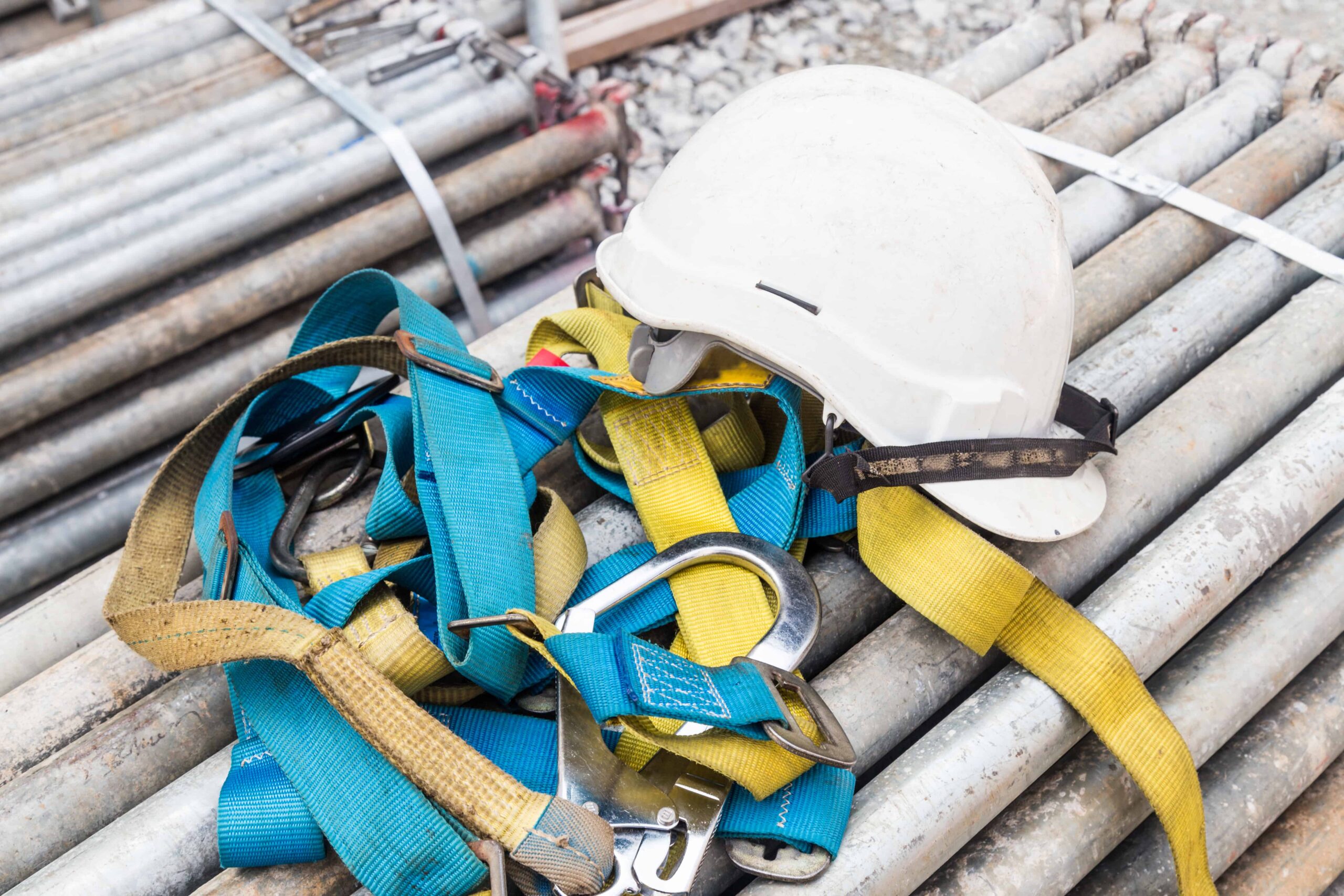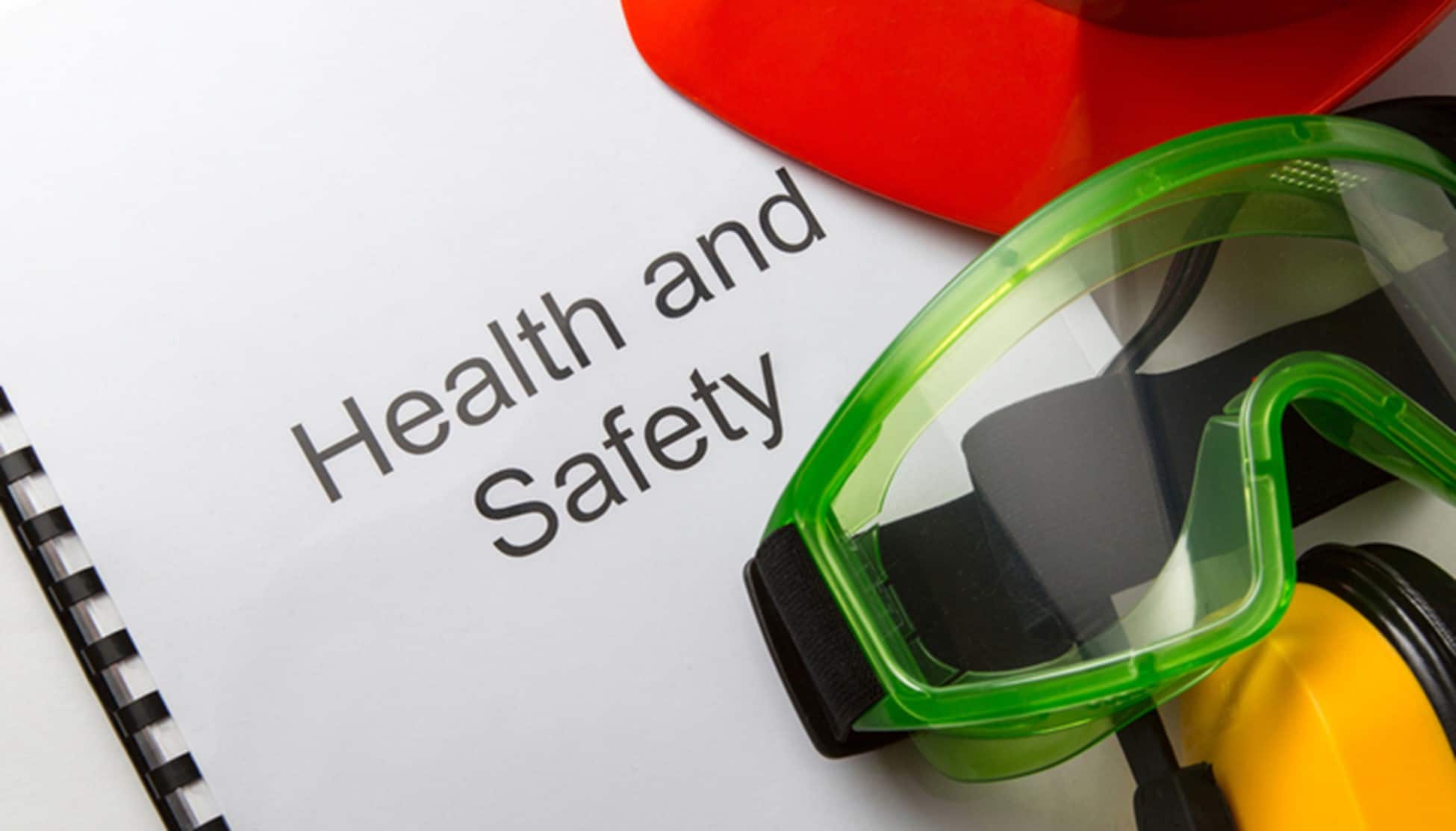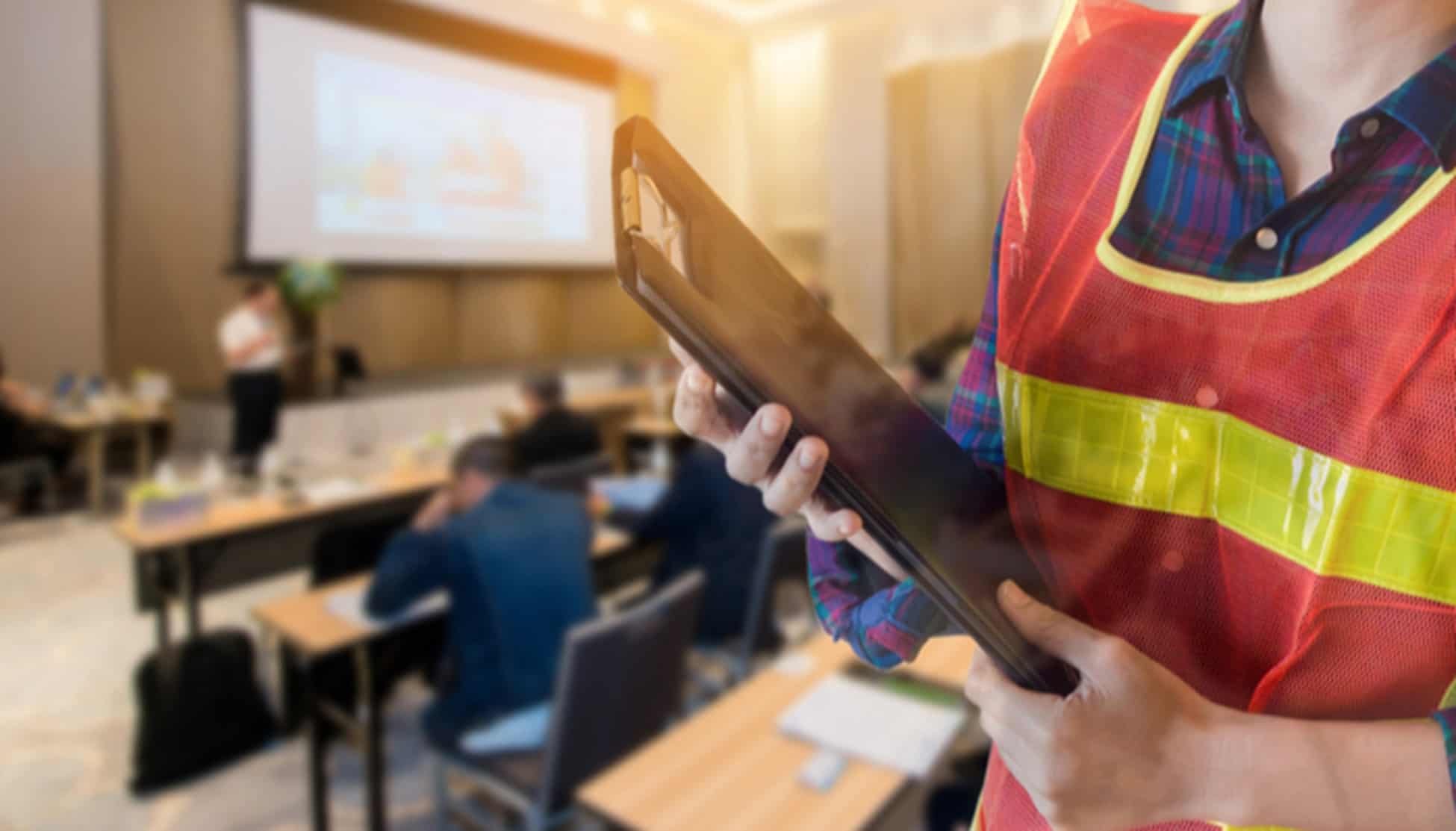
As we face the highly infectious disease that the World Health Organization (WHO) has named COVID-19, we must stand united if we are to achieve complete disease control and ensure everyone’s health and safety. To prevent and control the spread of the coronavirus, we must all play a part.
Businesses play a critical role in reducing the risks of infection because the virus can spread quickly among employees. This means taking the proper steps to ensure workplace safety through infection control protocols. Workplace infection control measures must be put into place.
But before enforcing infection control procedures, workers must understand the gravity of the virus. Educate employees on occupational exposure, disease prevention, and answer frequently asked questions about the coronavirus. If you don’t know the answer, find the answers from reliable sources such as the World Health Organization and Centers for Disease Control and Prevention (CDC) websites. COVID-19 is a novel disease with no vaccine, cure, or established treatment plan. Therefore, ensuring occupational health and safety and protecting workers from this highly infectious disease starts with understanding the invisible enemy the whole world is now battling.
What is COVID-19?
COVID-19 is a contagious viral infection that was discovered in 2019 and is responsible for the current global pandemic. The pathogen was linked to the family of coronaviruses (named for their crownlike spikes) in January of 2020. The name given to the specific virus responsible for the COVID-19 pandemic is severe acute respiratory syndrome coronavirus 2 (SARS-CoV-2). The name was chosen for the viruses similarity to the SARS coronavirus, which was responsible for the SARS outbreak back in 2002.
Origin of COVID-19
While there is speculation about the exact source of the virus, the origin has been pinpointed to the Hubei Province of China. The first cases were identified in December of 2019 in the city of Wuhan. The virus is highly contagious, resulting in its rapid spreading among the citizens. The virus was very difficult to contain and, over time, found its way to other countries as well. WHO officially declared COVID-19 to be a Public Health Emergency on the 30th of January 2020 and recognized it as a pandemic a month later, on the 11th of March 2020. Today, the virus has been reported in 185 countries, with more than 2 million confirmed cases worldwide.
How Does COVID-19 Spread?
SARS-CoV-2 is a respiratory virus that spreads mainly through respiratory droplets produced when an infected person coughs or sneezes, or through contaminated droplets of bodily fluids (mucus or saliva). While these droplets cannot get you sick by landing on your skin, they can still get into your organism through your mouth, nose, or eyes. This region is referred to as the T-zone and is a common entry point for viruses into the body. There are two main ways that infected droplets can reach the T-zone:
- Airborne transmission
One of the main ways the virus is transmitted is from person to person in close proximity. The moment an infected person sneezes or coughs, they expel millions of tiny droplets into the air around them. These droplets can find their way to people close by. If a person breathes in these droplets or the droplets land in the T-zone, there is a good chance that the person will get infected as well. While coronaviruses are not able to travel long distances through the air, they can still travel several feet and even stay suspended in the air for up to 10 minutes.
- Contact with Contaminated Surfaces
Another way that these viruses can reach your mouth, nose, or eyes is through touch. Once droplets are expelled from a sick person, they can land on a surface including floors, contaminating whatever comes in contact with the surface, even shoes. If you make contact with a contaminated surface and then touch your face, you may become infected. It is still not known how long COVID-19 can survive on a surface outside of a host, but it is estimated that it can survive anywhere from a few hours to a few days – depending on the type of surface. These are some estimates that scientists give:
- Latex and Aluminum – 8 hours
- Cardboard – 24 hours
- Stainless steel, plastic, wood – 3-4 days
- Metal, glass, ceramics, paper – 5 days
Symptoms of COVID-19
Knowing the symptoms of the virus is vital for not only recognizing what to look out for in others but also checking up on your own health. While the symptoms of COVID- 19 can vary, common symptoms include:
- Fever
- Cough (dry cough not due to allergies)
- Fatigue
Apart from these common symptoms, COVID-19 might also manifest in the following ways:
- Aches and pains
- Shortness of breath
- Congestion
- Sore throats
- Diarrhea
- Loss of appetite
- Loss of smell or taste
Mild symptoms can last for a couple of days in patients, and after which, they get better. However, that is not always the case. Problems arise when mild symptoms lead to serious cases, which has been observed to occur in people with weak immune systems or an underlying medical condition. A lot of the severe cases reportedly started with mild symptoms, which lasted about a week, and then rapidly worsening with high fever, severe cough, shortness of breath – all signs of pneumonia. Some patients have even felt mild symptoms that seemed to go away, but just as they felt improved health, they suddenly experienced severe symptoms.
Make sure you contact your healthcare provider if you experience a rapid worsening of your symptoms. In addition to that, make sure you contact your doctor if you or someone you know experiences – trouble breathing, persistent pressure or pain in the chest, confusion, bluish lips, or face. In serious cases, COVID-19 can result in the following deadly conditions:
The symptoms can depend a lot on the age and overall health of an individual. Younger healthy people tend to get sick and recover with mild symptoms. However, older people and people with health problems (high blood pressure, heart problems, diabetes, etc.) are at risk of experiencing more severe symptoms.
Classification of Symptoms
Carriers of COVID-19 can be divided into:
- Asymptomatic – Some patients (mostly younger ones) do not experience any symptoms when they contract the virus. These individuals are problematic because they do not show any symptoms but can still transmit the disease.
- Presymptomatic – Presymptomatic patients are those that carry the virus but have not started showing any symptoms yet. This is referred to as the incubation period and can last anywhere between 1 and 14 days. Just like asymptomatic patients, it is believed that these carriers can also transmit COVID-19.
- Very mildly symptomatic – This group of patients do not experience any severe symptoms and can still carry out day to day activities. Individuals with mild symptoms can spread the disease if they ignore their symptoms and continue to close to other people.
Treatment
While there is no cure for COVID-19, there are large scale clinical trials being done all around the world. In the meantime, treatment is focused on supportive care with some healthcare facilities approaching viruses as they would with the pandemic influenza. This includes providing patients experiencing severe symptoms with fluids, oxygen, and ventilator support. The goal here is to help the patient out as much as possible while their body fights off the disease.
General Practices Everyone Should Follow to Prevent the Spread of COVID-19
In light of all this, the best course of action to keeping your employees safe is prevention. We are going to look at some steps you can take to prevent the spread of COVID-19 as a business. The best way to minimize exposure is to educate people on the safety measures they can take to reduce their chances of contracting and spreading the virus.
Importance of Proper Hand Hygiene
Due to the way COVID-19 spreads, people must avoid making contact with their eyes, mouth, and nose. The problem is that this can be very difficult to control. In order to minimize the chances of getting sick, we must follow the best hand-washing practices. While this might sound silly to a lot of people, the fact of the matter is that washing your hands is usually done on autopilot. The majority of people fall into the habit of quickly going through the motion and carrying on with their day. This can result in ineffective washing and the spread of the virus. It is recommended that people bring their attention to the way they wash their hands. Here is the correct way to wash your hands.
- Wet hands with running water
- Apply enough soap to cover wet hands
- Scrub all surfaces of the hand – pay attention to the area between your fingers, back of your hands, and under your nails. The process should last a minimum of 20 seconds.
- Rinse your hands thoroughly with running water
- Dry hands properly.
Washing your hands may not always be an option. In such cases, it is recommended that people use hand sanitizers that contain at least 60% alcohol. Make sure to apply the rub to all surfaces of the hand.
Social Distancing
One of the best ways to reduce the chances of getting sick is to practice social distancing. This involves keeping a physical distance away from people and reducing the number of times you come into close contact with others. It is recommended to avoid going to places with a lot of people, but if it is unavoidable, it is best to keep your distance (6 feet/ 2 meters) away.
New research Emerging Infectious Diseases published by the CDC found the airborne distance can spread 13 feet which is more than twice the recommended social distancing guidelines.
Respiratory Hygiene
Proper respiratory hygiene/cough etiquette is vital for the prevention of COVID-19.
People should follow good respiratory hygiene. This means covering your nose and mouth when you sneeze or cough. This can be done with a tissue, your elbow, or with a facemask. Masks might be the best option for slowing down the spread of the coronavirus.
Steps Employers Must Take to Reduce the Spread of COVID-19
While getting acquainted with the general practices necessary to prevent the spread of the virus is a great start, there are some additional measures that businesses must do to stop the spread of the virus.
1. Prepare an Infectious Disease Preparedness and Response Plan
By failing to prepare, you are preparing to fail. The saying carries a lot of weight in the time of a pandemic like COVID-19. The first thing you need to do as an employer is to develop a clear and concise plan that covers important steps and measures to protect against the spread of COVID-19. The plan shall consider and cover the risks associated with various workplaces and job sites and job tasks performed.
- Consider where, how, and what sources of COVID-19 can affect your workers. Are your workers in contact with the general public, customers, other coworkers, patients, travelers e.t.c
- Think of non-occupational risk factors at home and in the community
- Your plan shall also take into account the individual risk factors of your employees. This includes their age and health.
- Measures necessary to control risks.
2. Get Ready to Implement Basic Infection Prevention Measures
The majority of businesses will fall under the mild to low risk of exposure groups. This means that employers will need to implement basic infection prevention measures. These include:
- Making sure that all employees are aware of the general practices of preventing the spread of infectious diseases. This includes hand hygiene, social distancing, and respiratory hygiene.
- Encouraging workers to stay at home if they are sick. The worst thing an employer can do is force an employee to come to work when they are experiencing symptoms that may be linked to the coronavirus.
- Make sure there are tissue boxes available and trash receptacles for proper disposal of used tissues.
- Look into policies and practices that will reduce the amount of time your employees are exposed to other people. This can include work-from-home arrangements or flexible work hours.
- Make sure your work environment is clean and safe with regular housekeeping practices. This involves cleaning and disinfecting frequently touched surfaces, equipment, and other elements in the workspace. When picking chemicals, make sure that they are EPA approved disinfectants that state they can disinfect against the emerging pathogens. When using the products, adhere to the manufacturer’s instructions for proper use.
- Discourage employees from sharing workspaces and work equipment during the outbreak.
3. Classifying the Risk of Worker Exposure to the SARS-CoV-2 Virus
The first thing you need to do is determine the level of risk involved in your line of work. The Occupational Safety and Health Administration (OSHA) has classified jobs into four risk exposure levels according to industry type and need for close proximity to sick people or those who are suspected of being sick. These classifications are:
- Very High Risk of Exposure – These are jobs with high potential of exposure to confirmed or suspected sources of the virus during medical, postmortem, or laboratory procedures. It involves people working directly with patients, deceased, or samples with the virus.
- High Exposure Risk – These are jobs with potential exposure to known or suspected sources of COVID-19.
- Medium Exposure Risk – These are jobs requiring an individual to be in frequent contact or in close proximity to people that may be infected with COVID-19 but are not known or suspected of having the disease. These are positions that have contact with the general public.
- Low Exposure Risk – These are jobs that do not require being in close contact with the general public or people suspected or known to be carriers. This category has minimal occupational contact with the public and other coworkers.
4. Applying Workplace Controls
Occupational safety and health professionals use a system called the hierarchy of hazard controls. This is a widely used system that is used to control workplace hazards. The hazard controls in the hierarchy are, in order of decreasing effectiveness:
- Elimination
- Substitution
- Engineering controls
- Administrative controls
- Safe Work Practices
- Personal protective equipment (PPE)
In cases such as the COVID-19 outbreak, the first two controls of elimination and substitution are not an option. This means that businesses and institutions are left with engineering controls, administrative controls, and PPE. Each of these available control measures has its own set of pros and cons regarding effectiveness, price, and implementation. In the case of infectious diseases, a combination of control measures will most likely be necessary to secure employee safety.
5. Engineering Controls
The aim of engineering controls involves isolating workers from the potential threat of infectious diseases. In environments where engineering controls are appropriate, the goal is to reduce exposure without affecting worker behavior. When it comes to COVID-19, this can include the following methods:
- Installation of high-efficiency air filters
- Increasing ventilation rates in the work environment
- Installing physical barriers, like clear plastic sneeze guards
- Installing a drive-through window for customer service
- Specialized negative pressure ventilation in some settings, such as for aerosol-generating procedures.
6. Administrative Controls
Administrative controls are changes made to work policies or procedures to reduce or minimize exposure to infectious diseases. In the case of COVID-19, administrative measures can include:
- Encouraging sick employees to stay home
- Reducing contact between individuals. This can take the form of replacing face to face meetings with virtual communications and working from home if possible.
- Establishing alternating days or different shits in order to reduce the total number of employees on the work premises at any one time. This can help make social distancing more possible while still keeping teams with a full onsite work week.
- Refraining from nonessential travel to locations that are positive for the COVID-19 outbreak.
- Educating employers with up-to-date information and best practices regarding the outbreak.
- Establishing communication plans that allow workers to voice concerns. Best done virtually.
- Proper training to employees that will need to use specialized equipment or clothing.
7. Personal Protective Equipment (PPE)
The obligation of ensuring employee safety and providing PPE to employees falls on the employer. The proper use of personal protective equipment can help prevent some exposure; however, it should not be the sole prevention strategy. When it comes to the COVID-19 outbreak, the recommended PPE is specific to occupations and job tasks. Examples of PPE include gloves, goggles, masks, face shields, and respiratory protection. Regardless of the type of PPE in question, they must follow certain guidelines:
- The main criterion for choosing PPE should be the potential hazard to the worker.
- Make sure the PPE fits properly.
- Make sure the equipment is consistently and properly worn whenever required
- Equipment should be properly inspected and replaced whenever necessary.
- Equipment should be properly removed, cleaned, and stored or disposed of to avoid further contamination of others or the environment.
The responsibility of protecting employers and slowing down the spread of infectious diseases like COVID-19 in the workplace falls onto the employers. It is important that they do everything they can to educate, train, and protect people on their premises. If you need help in setting up and creating a safety plan in this outbreak, visit Safety4Employers. We will be glad to help you protect yourself and your employees.








